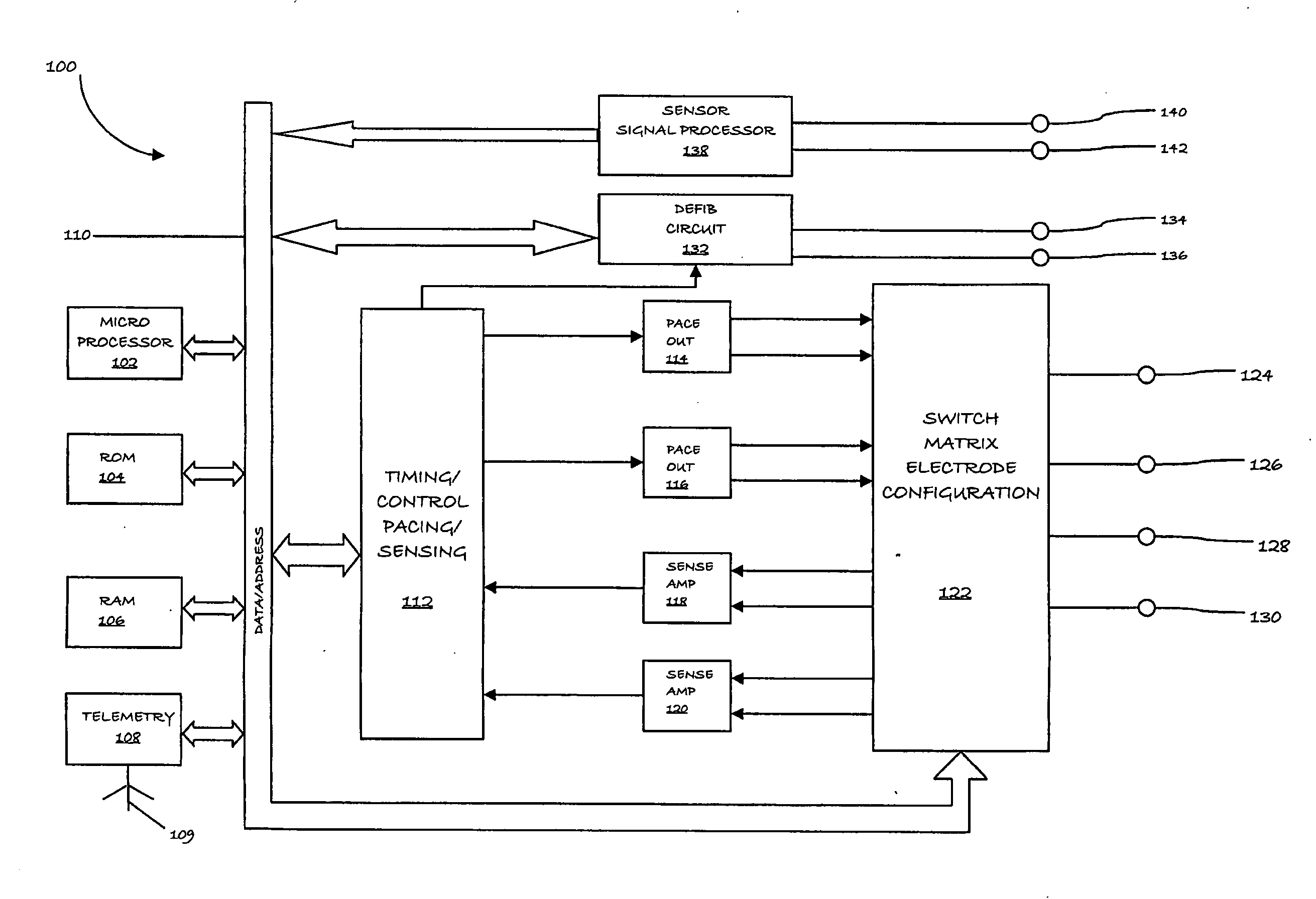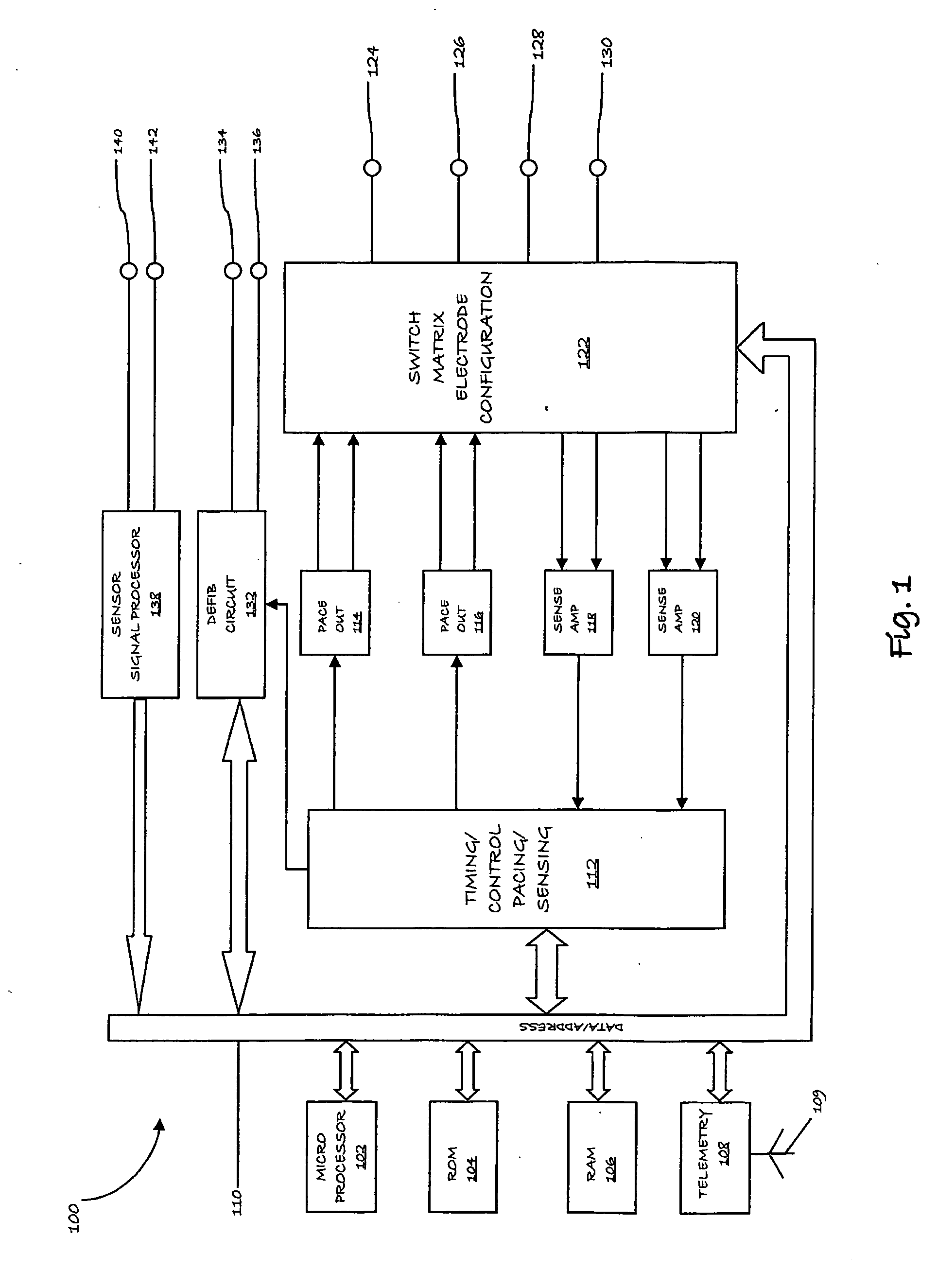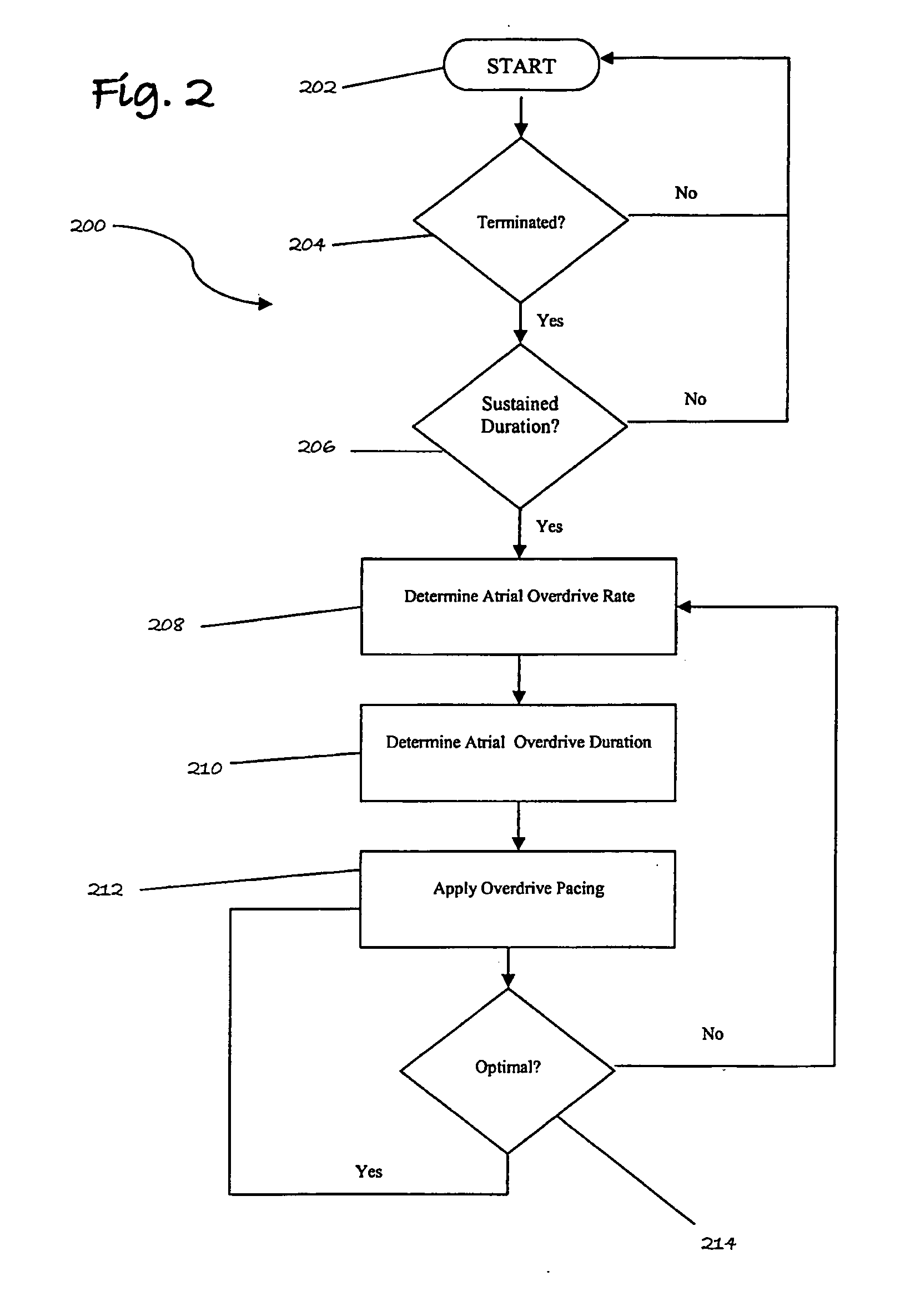System and method for using atrial pacing to enhance function of stunned atrial myocardium following conversion to normal sinus rhythm
- Summary
- Abstract
- Description
- Claims
- Application Information
AI Technical Summary
Benefits of technology
Problems solved by technology
Method used
Image
Examples
Embodiment Construction
[0015]FIG. 1 is a block diagram of electronic components of an implantable medical device (IMD) 100 that is configured to apply pacing and use sensor feedback. Microprocessor 102 controls the IMD in response to programmed instructions read from a storage device such as read-only memory (ROM) 104 via data / address bus 110. IMD 100 also includes random access memory (RAM) 104, which may be used to store physiological signal data, such as data obtained from tachyarrhythmia episodes. This data may be used by microprocessor 102 for therapy delivery and diagnostic purposes, as will be discussed in more detail in connection with FIGS. 2 and 3. This data may also be transferred to an external device via telemetry circuit 108 and antenna 109. Telemetry circuit 108 and antenna 109 may also be used to transfer information to the IMD.
[0016] Microprocessor 102 is coupled to timing / control circuitry 112 and controls timing / control circuitry 112 to deliver pacing pulses to a patient at the appropr...
PUM
 Login to View More
Login to View More Abstract
Description
Claims
Application Information
 Login to View More
Login to View More - R&D Engineer
- R&D Manager
- IP Professional
- Industry Leading Data Capabilities
- Powerful AI technology
- Patent DNA Extraction
Browse by: Latest US Patents, China's latest patents, Technical Efficacy Thesaurus, Application Domain, Technology Topic, Popular Technical Reports.
© 2024 PatSnap. All rights reserved.Legal|Privacy policy|Modern Slavery Act Transparency Statement|Sitemap|About US| Contact US: help@patsnap.com










